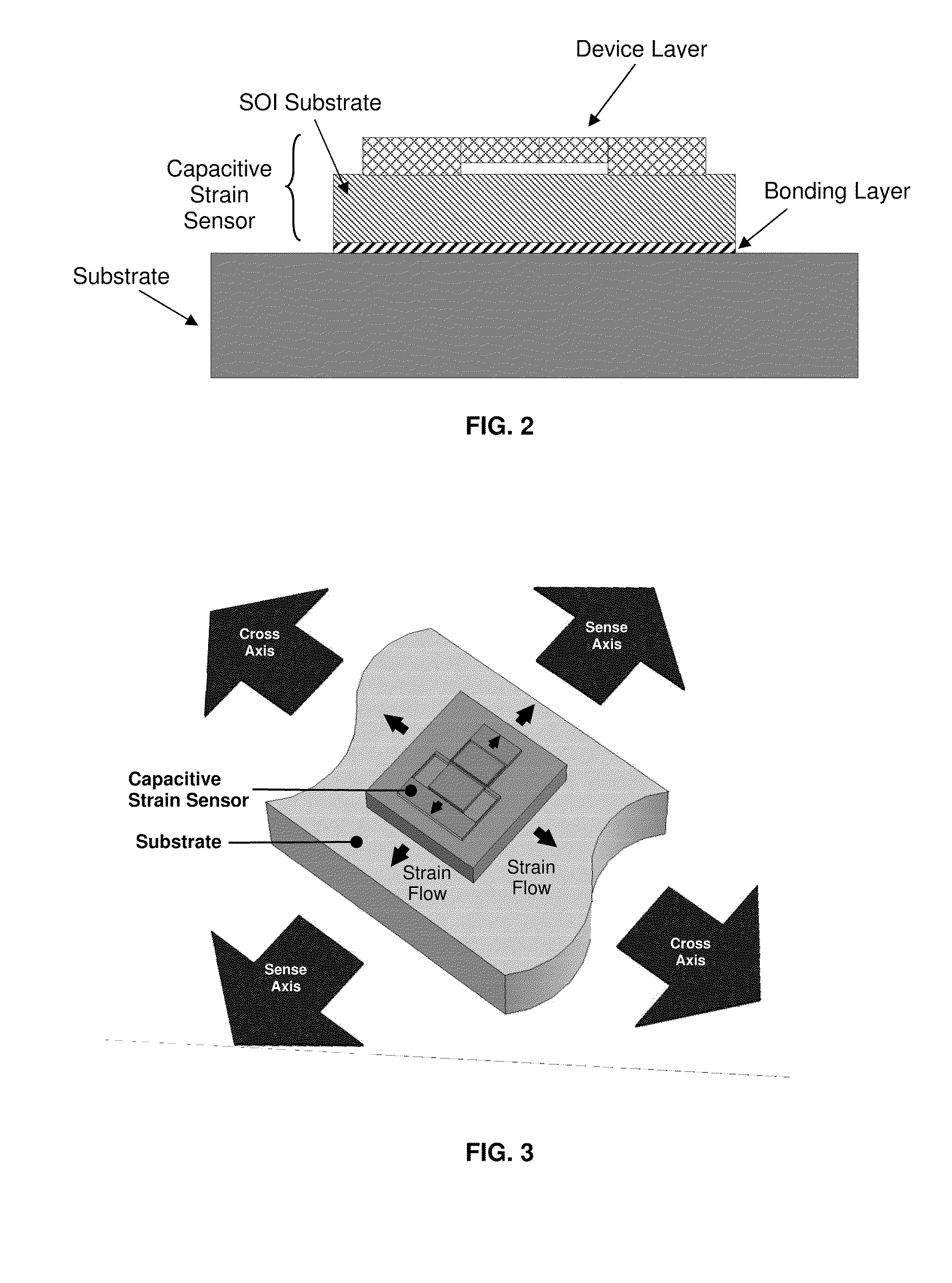Capacitive strain sensor
- Summary
- Abstract
- Description
- Claims
- Application Information
AI Technical Summary
Benefits of technology
Problems solved by technology
Method used
Image
Examples
examples
Fabrication Process
[0069]Materials and Methods
[0070]The fabrication process used a 4-inch silicon-on-insulator (SOI) wafer with a 25 μm thick device layer, 2 μm thick insulator (buried silicon oxide), and 500 μm thick single crystal silicon (SCS) substrate (i.e., handle wafer). As will be explained in more detail below, for testing experiments, the sensor was wirebonded to a circuit board using commercial off-the-shelf (COTS) electronics. The device layer was chosen to be highly P-type doped with a resistivity of 0.002 Ω-cm in order to achieve Schottky contact between the aluminum wirebond and the silicon structure.
[0071]FIG. 6 shows a schematic of the basic fabrication process of the capacitive strain sensor of the present disclosure. A 4-inch SOI wafer was cleaned in a heated Piranha bath at 120° C. for 20 minutes followed by a deionized (DI) water rinse and dry step (see FIG. 6, step (a)). A 1 μm thick low temperature silicon oxide (LTO) layer was deposited on the wafer using a l...
PUM
| Property | Measurement | Unit |
|---|---|---|
| Fraction | aaaaa | aaaaa |
| Fraction | aaaaa | aaaaa |
| Thickness | aaaaa | aaaaa |
Abstract
Description
Claims
Application Information
 Login to View More
Login to View More - R&D
- Intellectual Property
- Life Sciences
- Materials
- Tech Scout
- Unparalleled Data Quality
- Higher Quality Content
- 60% Fewer Hallucinations
Browse by: Latest US Patents, China's latest patents, Technical Efficacy Thesaurus, Application Domain, Technology Topic, Popular Technical Reports.
© 2025 PatSnap. All rights reserved.Legal|Privacy policy|Modern Slavery Act Transparency Statement|Sitemap|About US| Contact US: help@patsnap.com



